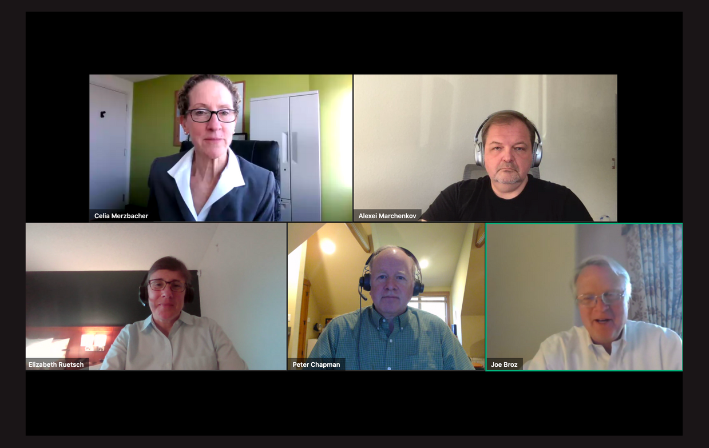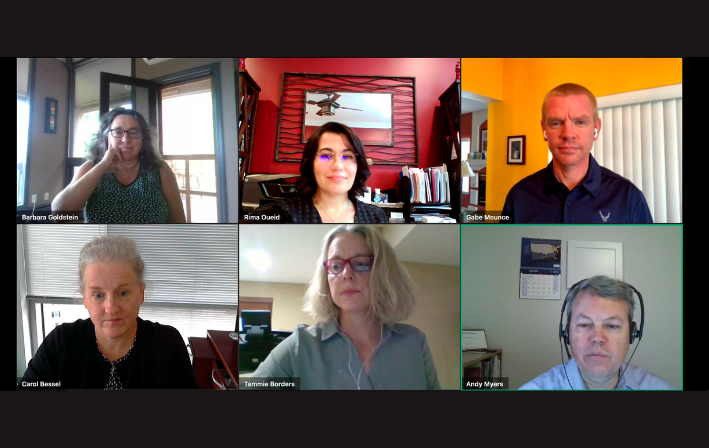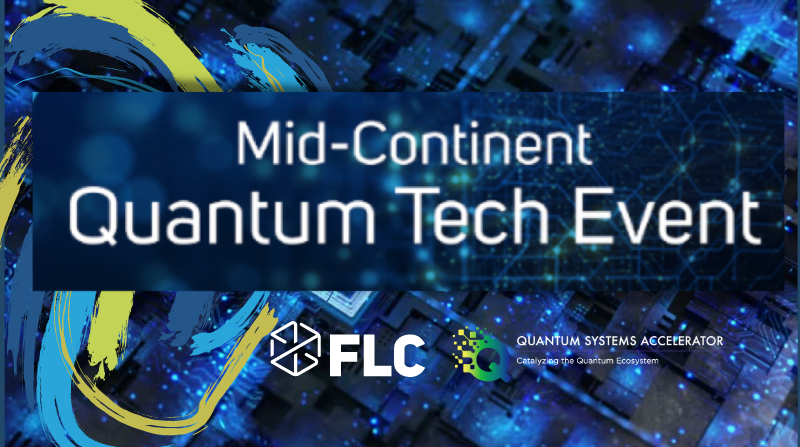U.S. leaders from the federal government, industry, national labs, and universities participated in this two-day virtual event to discuss how federal quantum information science (QIS) and technology programs can work best with industry and how to accelerate the development of QIS-enabled applications to benefit society.
Keynote speakers and panelists included representatives from the National Quantum Coordination Office (NQCO) at the White House Office of Science and Technology Policy (OSTP) and numerous government agencies such as the U.S. Department of Energy, Department of Defense, National Institute of Standards and Technology, National Science Foundation, Air Force Research Laboratory, and Quantum Economic Development Consortium (QED-C), among others. In addition, industry was widely represented by researchers and entrepreneurs from major publicly traded companies and innovative startups in the QIS ecosystem such as IBM, IonQ, Keysight Technologies, and Bleximo. The event also included dozens of scientists from academia and national science laboratories who pioneered QIS research and technology in the United States.

Sandia National Laboratories’ Rick Muller, QSA deputy director, explained:
“Quantum information science and technology is an excellent case study of how the federal government works with industry to support fundamental science research and emerging technology protocols. We’ve seen that it’s becoming a fast-growing field, and the event fostered discussions about the best technologies and practices.”
Business leaders discussed their different journeys toward finding value in the nascent market. The discussions focused on products that can be supported and affordably shipped to customers in the near term, while creating roadmaps for long-term economic development and commercialization. Panelists also described how they’re moving toward an engineering-driven culture from the early-stage quantum devices to assembly lines and manufacturing. Others expressed the need for the federal government and industry to collaboratively help prevent espionage and intellectual property (IP) theft by strengthening export and security controls.
Paul Zielinski, FLC executive director, said:
“This QIS event was all about the type of public-private collaboration that the Federal Laboratory Consortium promotes. Insights shared among thought leaders from government laboratories, academia and business will inform the partnerships needed to successfully build a marketplace for QIS innovations that can benefit society.”
Enabling Competitiveness
A common thread in the event was collaboration as a prerequisite for competitiveness. Several panelists explained their efforts to define how specific research collaborations can work productively with open-access testbeds in government labs, for example, to rapidly beta-test the industry’s emerging tools in controls, software, and related technologies. In addition, some observed that making quantum hardware publicly accessible and open-sourcing prototypes accelerates the field’s benchmarking and road mapping.

QSA, one of five Department of Energy Office of Science National QIS Research Centers, supports U.S. industry, national economic competitiveness, and security by advancing the three major technologies for quantum computing: superconducting circuits, trapped-ion systems, and neutral atoms. Participation in QSA is governed by agreements between members that streamline the framework for a seamless collaboration beyond just a single technology. This ongoing collaboration with world-leading experts accelerates the development of systems to achieve a practical quantum advantage.
Lawrence Berkeley National Laboratory’s Irfan Siddiqi, director of QSA, explained during the event:
“The fundamentals of the technologies for quantum computing are still very much a black box. We know the inputs and outputs to a degree and the error correction and mitigation techniques trying to martial the power of the assets. Still, we also need to advance the technical benchmarks, common language, and engineering description of functional tools across technologies so the broader ecosystem can flourish.”
Inspiring the Workforce of Tomorrow
Another key to technology innovation is providing new educational and training opportunities for the incoming generations. Participants and panelists agreed that a core benefit of research partnerships across sectors and agencies is the creation of robust training pipelines for a diverse quantum-ready workforce. This preparation begins with numerous entry points to QIS and technology, starting as early as high school and including individuals from different backgrounds.
Sandia National Laboratories’ David Kistin, the QSA associate deputy director of workforce and FLC’s mid-continent regional coordinator, said:
“We heard from leaders how to bring core technologies to market by working in sync to leverage each party’s scientific breakthroughs and best practices. And we also discussed how everyone is on the same page about creating more training opportunities today for tomorrow’s quantum workforce.”
Founded in 1931 on the belief that the biggest scientific challenges are best addressed by teams, Lawrence Berkeley National Laboratory and its scientists have been recognized with 14 Nobel Prizes. Today, Berkeley Lab researchers develop sustainable energy and environmental solutions, create useful new materials, advance the frontiers of computing, and probe the mysteries of life, matter, and the universe. Scientists from around the world rely on the Lab’s facilities for their own discovery science. Berkeley Lab is a multiprogram national laboratory, managed by the University of California for the U.S. Department of Energy’s Office of Science. DOE’s Office of Science is the single largest supporter of basic research in the physical sciences in the United States, and is working to address some of the most pressing challenges of our time. For more information, please visit energy.gov/science.
Sandia National Laboratories is a multimission laboratory operated by National Technology and Engineering Solutions of Sandia LLC, a wholly owned subsidiary of Honeywell International Inc., for the U.S. Department of Energy’s National Nuclear Security Administration. Sandia Labs has major research and development responsibilities in nuclear deterrence, global security, defense, energy technologies and economic competitiveness, with main facilities in Albuquerque, New Mexico, and Livermore, California.
The Quantum Systems Accelerator (QSA) is one of the five National Quantum Information Science Research Centers funded by the U.S. Department of Energy Office of Science. Led by Lawrence Berkeley National Laboratory (Berkeley Lab) and with Sandia National Laboratories as lead partner, QSA will catalyze national leadership in quantum information science to co-design the algorithms, quantum devices, and engineering solutions needed to deliver certified quantum advantage in scientific applications. QSA brings together dozens of scientists who are pioneers of many of today’s unique quantum engineering and fabrication capabilities. In addition to industry and academic partners across the world, 15 institutions are part of QSA: Lawrence Berkeley National Laboratory, Sandia National Laboratories, University of Colorado at Boulder, MIT Lincoln Laboratory, Caltech, Duke University, Harvard University, Massachusetts Institute of Technology, Tufts University, UC Berkeley, University of Maryland, University of New Mexico, University of Southern California, UT Austin, and Canada’s Université de Sherbrooke. For more information, please visit https://archive.quantumsystemsaccelerator.org/
The Federal Laboratory Consortium for Technology Transfer (FLC) isis a formally chartered, nationwide network of more than 300 federal laboratories, agencies, and research centers that foster commercialization best practice strategies and opportunities for accelerating federal technologies from out of the labs and into the marketplace. To learn more, visit www.federallabs.org.
